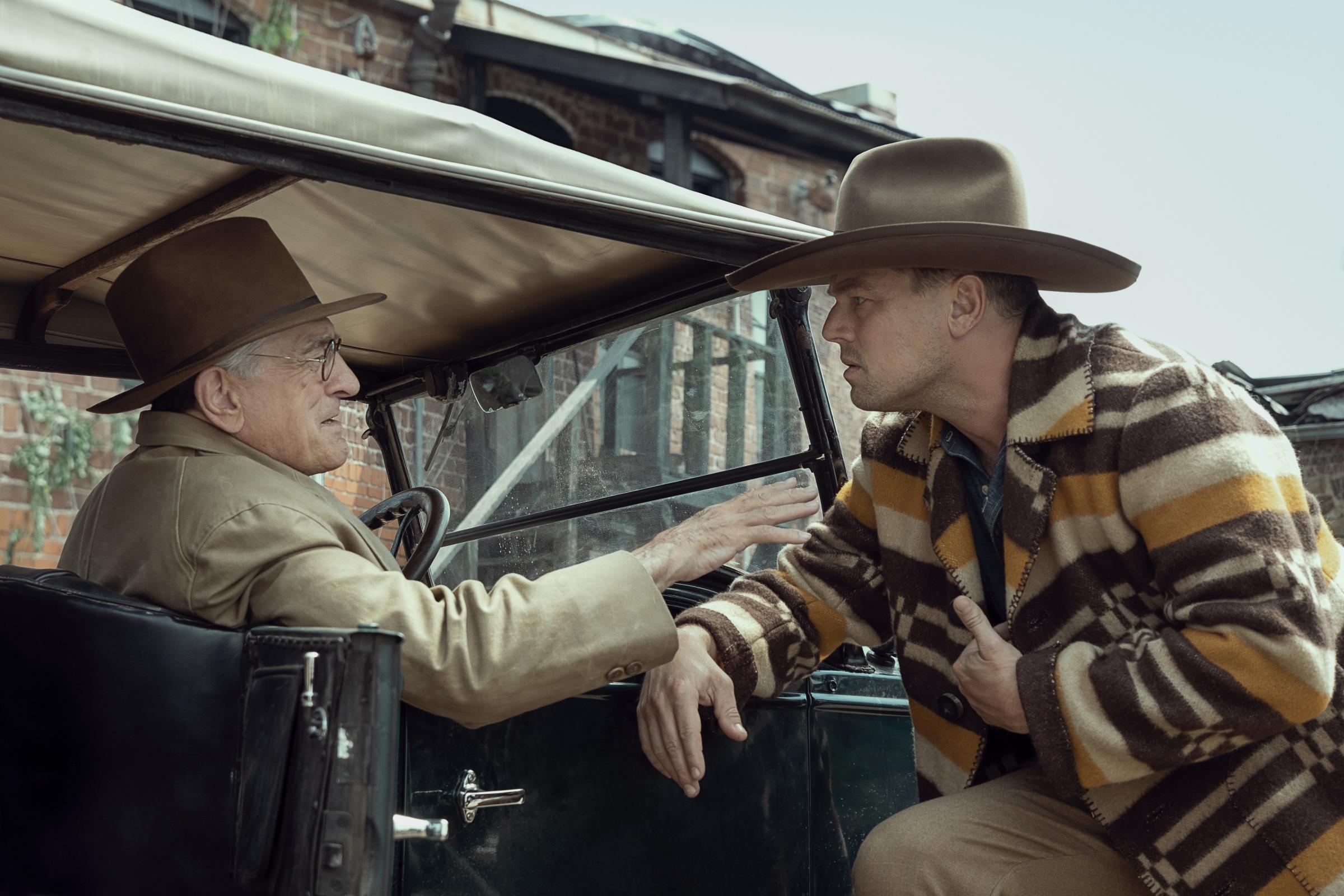Warning: This post contains spoilers for Killers of the Flower Moon.
Over the course of the nearly three-and-a-half-hour runtime of Killers of the Flower Moon, filmmaker Martin Scorsese presents a significantly different version of the true story told in journalist David Grann's 2017 best-selling book of the same name.
At the center of both narratives is the sinister series of murders of members of the Osage Nation that took place in early 1920s Oklahoma. Known as the "Reign of Terror," the murders were committed at a point in time when the Osage were considered the richest people per capita in the world following the discovery of oil reserves under their land.
But while Grann's account largely focuses on how the crimes against the Osage came to be investigated and partially solved by a team of FBI field agents led by former Texas Ranger Tom White (played by Jesse Plemons in the movie), Scorsese shifts the spotlight to the story of love and betrayal at the heart of the tragedy.

The film, which arrives in theaters Oct. 20 ahead of a streaming debut on Apple TV+, traces the relationship between an oil-rich Osage woman, Mollie Kyle (Lily Gladstone), and white World War I veteran Ernest Burkhart (Leonardo DiCaprio), who comes to live in Osage County and marry Mollie at the behest of his rancher uncle, William K. Hale (Robert De Niro), the self-proclaimed "King of the Osage Hills." Audiences follow the troubled romance from the pair's first meeting through the early years of their marriage to the breaking of their ill-fated union.
Read more: Martin Scorsese Still Has Stories to Tell
How the movie reframes the story of the Osage Murders
The book reads like a mystery of sorts, with Grann laying out the facts of the Osage murders—including those of Mollie's mother, three sisters, and brother-in-law—before detailing how White came to uncover the truth about the killings: that Hale, with the help of Ernest, had arranged for the deaths of Mollie's family members as well as a number of other Osage in order to cash in on their oil headrights and life insurance policies. As its subtitle, "The Osage Murders and the Birth of the FBI," suggests, the book also greatly expounds upon the broader historical context that played a role in what happened to the Osage and how J. Edgar Hoover’s nascent Federal Bureau of Investigation got involved in the case.
Read More: How Killers of the Flower Moon Captures the True Story of the Osage Murders
The movie, on the other hand, makes it clear pretty much from the start that Hale and Ernest are the ones behind the deadly conspiracy to profit off the Osage. Scorsese shifts the focus from the fledgling FBI's investigation into the murders to the relationship between Mollie and Ernest—a decision that came about when the filmmaker realized he was initially "making a movie about all the white guys."
"I was taking the approach from the outside in, which concerned me," Scorsese told TIME.

At that point in time, DiCaprio, who was initially cast to play White, switched to the role of Ernest, whom he portrays as a spineless and easily-manipulated villain. Still, Gladstone's shrewd Mollie falls for Ernest and stands by him for years, only losing faith after he finally confesses to his role in the murders while testifying against Hale and other conspirators.
Mollie and Ernest's marriage became the driving force of the film, according to Scorsese, after the couple's real-life granddaughter, Margie Burkhart, reminded him of the significance of their relationship within the overarching historical narrative.
"She said we have to remember that Ernest loved Mollie, and Mollie loved Ernest," he said during an Oct. 16 press conference. "It's a love story. So what happened was the script shifted that way and it became gritty."
Read More: The Ending of Killers of the Flower Moon Is Astonishing
Depicting the progression of Mollie and Ernest's relationship allowed Scorsese to transform Grann's book from a whodunnit into more of an exploration of the systemic complicity that made the Osage murders possible.
"What I wanted to capture, ultimately, was the very nature of the virus or the cancer that creates this sense of a kind of easygoing genocide," he said. "When there is betrayal that deep, and we know for a fact that it was that way, there's our story."
However, the movie's suggestion that Ernest loved Mollie is a controversial representation of the truth to some involved in the project. At the film's premiere, Osage language consultant Christopher Cote told the Hollywood Reporter that, as an Osage himself, he really wanted the movie to be told from the perspective of Mollie and her family.
"I think it would take an Osage to do that," he said. "Martin Scorsese not being Osage I think he did a great job representing our people. But this history is being told almost from the perspective of Ernest Burkhart. And they kind of give him this conscience and they kind of depict that there's love. But when somebody conspires to murder your entire family, that's not love. That's beyond abuse."
More From TIME
More Must-Reads from TIME
- Caitlin Clark Is TIME's 2024 Athlete of the Year
- Where Trump 2.0 Will Differ From 1.0
- Is Intermittent Fasting Good or Bad for You?
- The 100 Must-Read Books of 2024
- Column: If Optimism Feels Ridiculous Now, Try Hope
- The Future of Climate Action Is Trade Policy
- FX’s Say Nothing Is the Must-Watch Political Thriller of 2024
- Merle Bombardieri Is Helping People Make the Baby Decision
Write to Megan McCluskey at megan.mccluskey@time.com